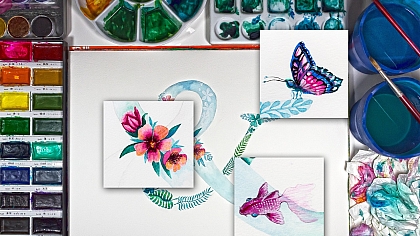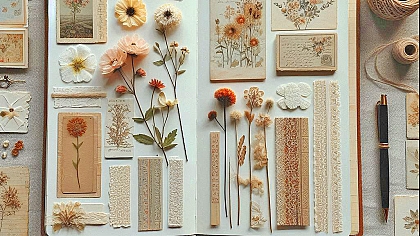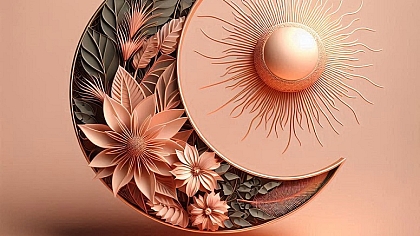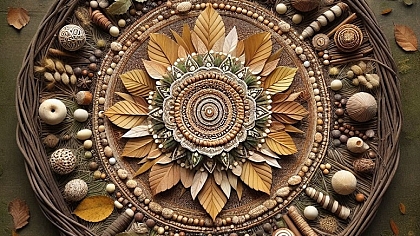
The History of Islamic Art
As a very broad term in which many things are included, Islamic art generally refers to the art produced by Muslims from the time when Islam first spread out of Arabia in the 7th century to the height of the Ottoman Empire in the 16th century.
In an attempt to belittle the efforts and achievements of Muslims throughout history, some historians claim that there is no such thing as “Islamic Art” and that the art of the Islamic empire is taken from the nations conquered before like the Romans, Greeks, and Persians.
Everything from Islamic architecture, calligraphy, pottery, glass, and textiles are regarded as forms of Islamic art. Here are some examples of Islamic art and how they have impacted the world today:
Carpets & Rugs
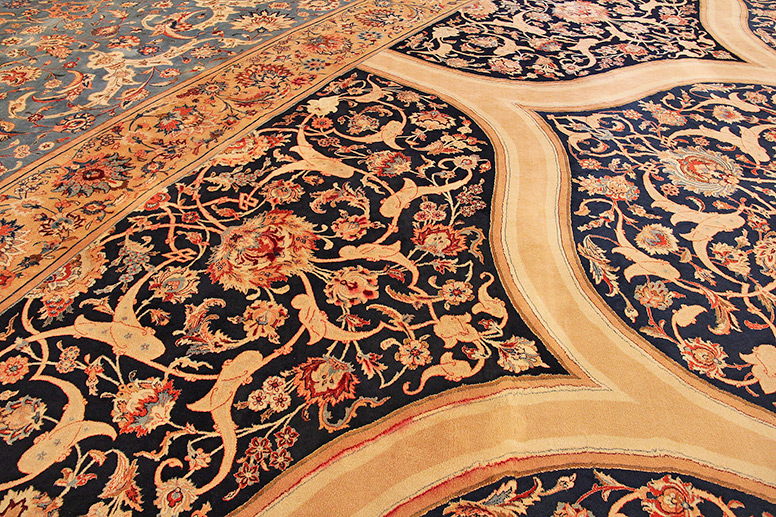
The most iconic and popular forms of Islamic art are the carpets and rugs produced in the Middle East and Asia. Little evidence is available on the designs of carpets predating the 16th century as hardly any survive today, there is, however, evidence in the Renaissance paintings which have accurately portrayed the carpets which were imported from the East. There was a high demand for Islamic carpets in Europe throughout history, the same quality and calibre of carpets just weren’t produced in the region and it was a symbol of wealth and prestige to own one of these lavish carpets.
The design of the carpets depended on the region that they were from, the discovery of an Egyptian carpet dating back to the 16th century (found in the attic of the Pitti Palace in Florence) featured a design of octagonal roundels, stars, and other complex patterns that appear to shimmer. The Mamluks of Egypt were the first to produce this style of carpet, later when the Ottomans conquered Egypt, they too continued the production.
Alongside Egyptian carpets, another famous variety was the Persian carpets. During the 16th and 17th centuries, both the Ottoman and Mughal Empires (both were Muslim empires, one based in Turkey, the other based in India) commissioned Persian carpet makers to design intricate carpets for the palaces. After realising their talent and understanding the demand for such carpets, the carpet makers began to sell to the nobles and the wealthy.
Since the depiction of animate beings in Islam is forbidden as only Allah has the right to construct life, most Islamic carpets feature geometric design and complex patterns without the images of living things. Some Muslims who didn’t interpret the religious texts this way have depicted animals on their carpets but generally, this isn’t the case with the majority.
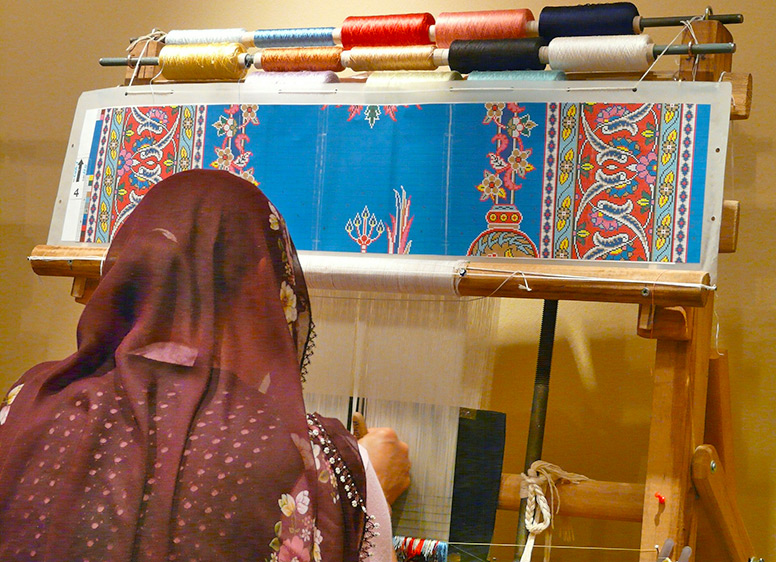
Carpets and rugs were made everywhere by Muslims, from the Persian cities to the nomadic Turkmen villages on the steppes, carpet weaving was a tradition among Muslims. They weren’t just produced to satisfy the European curiosity of the “Orient”; traditionally Muslims pray on carpets in the Mosque and at home, Muslims also eat on the floor so these religious traditions naturally made carpets an essential part of Islamic life. Carpets are a key example of Islamic art, as the style isn’t just unique to one kingdom or region but has been made by Muslims from distant lands for hundreds of years.
Whilst there is a certain degree of influence from other civilizations, Muslims are taught to see the good in everybody. Islamic art is a real concept and unique in its own right as a lot of art, such as the work that went into designing the beautiful gardens of the Alhambra palace, Granada, is directly inspired by verses of the Qur’an describing paradise.
The famous Arabesque design, named rightly so, was invented by the Muslims. This complex geometric design is key to Islamic art and can give the illusion of pattern moving; the famous Leonardo da Vinci was fascinated by it.
The birth of the Arabesque design is a direct result of the prohibition of depicting living things in Islam so artists had to experiment with inanimate things such as geometric patterns. Therefore the term “Islamic art” is perfectly applicable to describe the artwork made by Muslims and directly inspired by religious texts and concepts.
Textiles
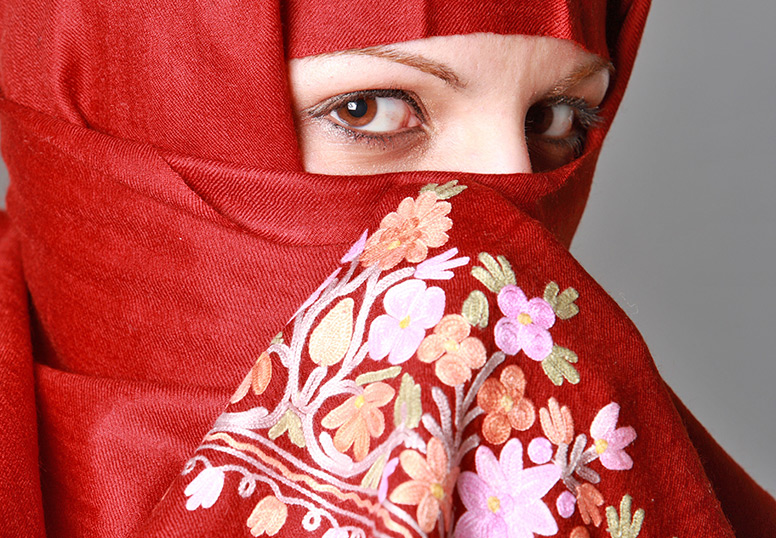
The most famous textile products in the world were made by Muslims and proved to be very popular in Europe. The Muslim state of Al-Andalus (modern Spain) produced some of the finest textile works in the 9th century when they made carpets, cushions, silk, curtains, shawls, divans, and leather. There were 3000 weavers in Cordoba alone and other towns gained popularity for different products, Cuenca was famous for its woollen stuff and Spanish silks, in general, were given as gifts by royalty all across Europe.
Exquisite textiles weren’t just limited to Muslim Spain however and Turkmen women from the nomadic tribes of Anatolia wove great many textile goods including saddlebags, cradles, carpets, clothing, and more for survival trade.
Textiles played a big part in the cultures of Medieval Islamic society, robes of honour and turbans made on the order of the Sultan were gifted to the State officials and other people of high standing as a reward for good service. The robes were highly decorative and featured intricate patterns, sometimes with the calligraphy of the name and position of the person on the sleeves.
The building which all Muslims face when they pray and make a pilgrimage at least once in a lifetime, known as the Kaaba in Makkah, is covered by a beautiful black cloth embroidered with gold designs and calligraphy.
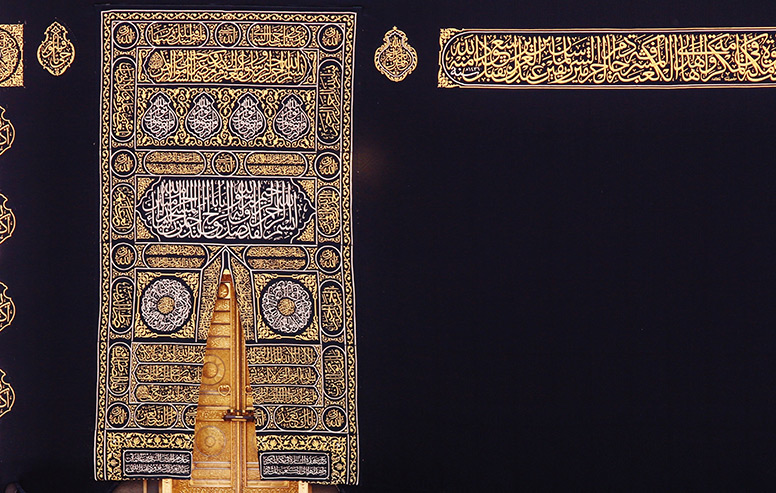
The detailed black cloth known as the kiswa was customarily changed by the Caliph every year, the Kaaba would then be covered with an exemplary work of art that was worthy enough of decorating the holiest site of Islam.
Cotton which was native to India began to be used all over the Islamic Empire and was another material valued in Europe. The fascination of Europeans with Islamic textiles came from the Crusaders when a barbaric force from Europe burned and pillaged their way to Palestine taking back much loot with them including fabrics, spices, and most importantly soap which was unheard of in the disease-ridden European cities.
Pope Sylvester II was buried in a Persian silk cloth and Queen Eleanor from Spain who married King Edward I of England brought lavish Andalusian carpets with her.
In the 17th century, textiles from the Muslim world were valued so much in England and France that the sheer amount imported threatened local industry, a ban was placed on some items and the number of imported textiles was greatly reduced.
Although Persian silk was well known for its high quality, Turkish silk was also sought after, especially in Europe.
Pottery & Glass
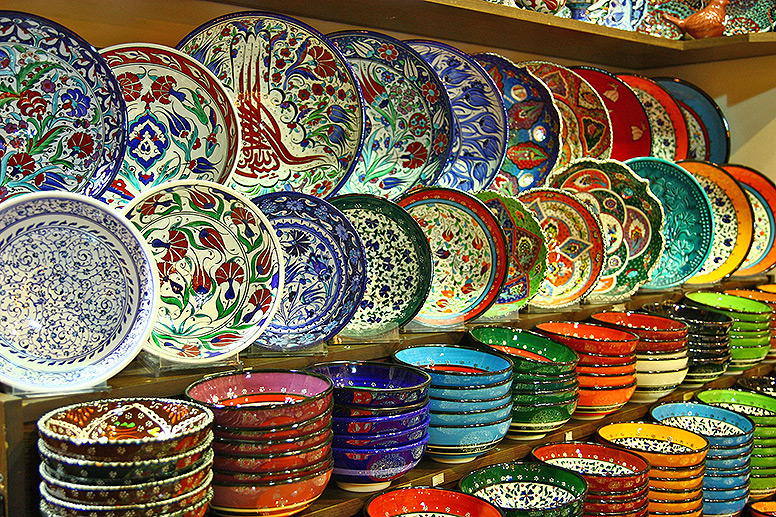
The art of pottery significantly advanced during the 8th and 9th centuries by the discoveries made by Muslim potters in Iraq and Syria. Pre-Islamic pottery, such as the red earthenware pots made by the Romans, were often unglazed, Muslim potters in Basra however, invented the process of tin-opacified glazing. Stone paste ceramics were also invented in 9th century Iraq, naming two of the greatest contributions made by Muslims to the art of pottery,
Alongside the world-famous potters in China, who produced very fine ceramics, Muslim potters from Spain, Iraq, Syria, Turkey, and North Africa all made superb pottery for which there was a high demand in Europe. Pottery was especially popular in Konya, Turkey, after many potters began to move there fleeing the Mongol invaders in the 14th century.
Archaeological evidence shows that Iraq and Syria were the world centres of glass production. In the 13th and 14th centuries, Muslims developed the technique of double stamping, in which patterns are stamped onto hot glass for decorative purposes. Syrian glass was so fine that it became a status symbol to own. Glass objects are not only decorative but serve as a practical necessity even in modern times and Muslims became the pioneers of this art.
Calligraphy
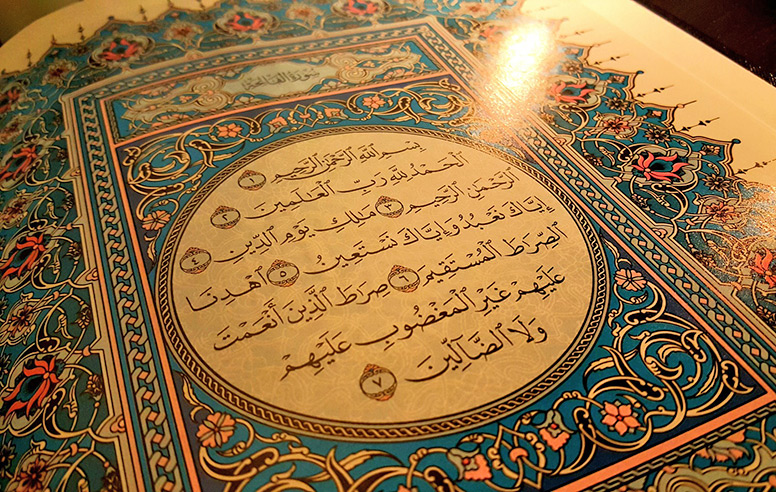
There are some languages in the world that when written in a certain style, look highly decorative. Alongside Chinese and Japanese scripts, one language that stands out in its calligraphic form is Arabic, especially when inscribed or painted in a beautiful colour such as green or gold.
Although calligraphy existed in Arabia before Islam, on a much smaller scale, the revelation of the Qur’an plus the invention of paper shortly after meant that scribes could practice their calligraphy on a cheaper medium, unlike parchment and papyrus which were expensive, and they could also spiritually benefit from this. Certain verses in the Qur’an such as the “Ayat Al-Kursi” or “The Verse of the Throne” can ward off evil and this among other verses and words, became the central focus of Muslim calligraphers during the Islamic Empire and even today.
Another focus of calligraphers during the Islamic Golden Age was the 99 names of Allah; since Muslims are forbidden to depict God as the human mind cannot comprehend Him, Muslims use the 99 names of Allah to know His attributes. Some of the names of Allah include “The Most Merciful” and “The Most Gracious”, and these names in their Arabic form are used to decorate mosques and ornamental objects.
Without understanding the meaning but falling in love with the design, Europeans tried to imitate Arabic calligraphy either known to them through trade or from souvenirs brought back by pilgrims to the Holy Land. Interestingly enough, a cross dating back to the 9th century found in Ireland bears the Arabic inscription “Basmallah” (Bismillah) meaning “In the name of Allah”.
